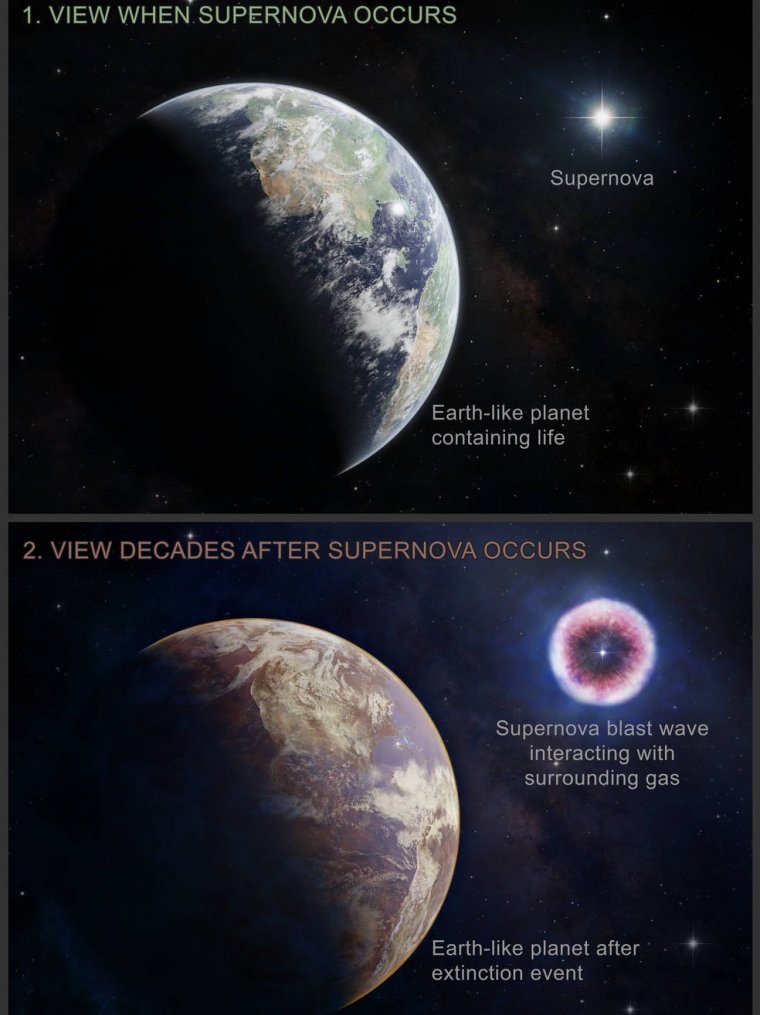| News / Space News |
New Stellar Danger
Astronomers have identified a new threat to life on planets like Earth: a phase during which intense X-rays from exploded stars can affect planets over 100 light-years away.

Illustration of an Earth-like planet before and after radiation exposure. Photo: NASA/CXC/M. Weiss
This newly found threat comes from a supernova’s blast wave striking dense gas surrounding the exploded star.
When this impact occurs it can produce a large dose of X-rays that reaches an Earth-like planet months to years after the explosion and may last for decades.
Such intense exposure may trigger an extinction event on the planet.
A new study reporting this threat show that planets can be subjected to lethal doses of radiation located as much as about 160 light-years away.
If a torrent of X-rays sweeps over a nearby planet, the radiation could severely alter the planet's atmospheric chemistry.
For an Earth-like planet, this process could wipe out a significant portion of ozone, which ultimately protects life from the dangerous ultraviolet radiation of its host star.
It could also lead to the demise of a wide range of organisms, especially marine ones at the foundation of the food chain, leading to an extinction event.
After years of lethal X-ray exposure from the supernova’s interaction, and the impact of ultraviolet radiation from an Earth-like planet’s host star, a large amount of nitrogen dioxide may be produced, causing a brown haze in the atmosphere.
A “de-greening” of land masses could also occur because of damage to plants.
SN 2010jl supernova has produced the most X-rays.
The authors estimate it to have delivered a lethal dose of X-rays for Earth-like planets less than about 100 light-years away.
There is strong evidence — including the detection in different locations around the globe of a radioactive type of iron — that supernovae occurred close to Earth between about 2 million and 8 million years ago.
Researchers estimate these supernovae were between about 65 and 500 light-years away from Earth. (NASA)
YOU MAY ALSO LIKE





